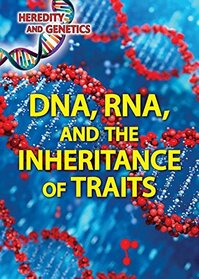This book has another example of barely readable text. There is a purple box around a black background with gold writing. This is extremely hard to read. A better choice would be a thin black box with black print on a light blue background. That would set the text apart as necessary (but separate from the information around it) yet remain readable.
Frankly, I don't see any 12 - 17-year-old reading this boring explanation of DNA and RNA. So I decided to check this book out to understand the DNA of genealogy (I have had our family's DNA analyzed). This book doesn't help. However, it mentions how DNA has been used to catch killers.
The illustrations included are critical for an understanding of DNA and RNA. First, the writer helps readers understand how easy it is to create mistakes in DNA replication. For example, skin cells live two to four weeks, while stomach lining cells last about five days. So the body's cells are constantly replacing themselves. Generally, the cell growth cycle checks for mistakes and stops the cycle for repair if something goes wrong in the replication process. However, radicals sometimes alter the replaced cells with this constant cell turnover. So DNA proofreads the copying of cells and tries to correct errors.
DNA can't work without its partner, RNA. When RNA fulfills its job, it falls apart. DNA is stable and a double-stranded molecule,e while RNA is almost always single. One interesting fact is that the author explains that viruses are parasites, not cells. They hijack cells to reproduce themselves. Many cause diseases, such as HIV.
This book taught me that life within the body's cells is a unique and constant process until death. There is also a short chapter on genetically-modified foods (Frankenfoods).
Frankly, I don't see any 12 - 17-year-old reading this boring explanation of DNA and RNA. So I decided to check this book out to understand the DNA of genealogy (I have had our family's DNA analyzed). This book doesn't help. However, it mentions how DNA has been used to catch killers.
The illustrations included are critical for an understanding of DNA and RNA. First, the writer helps readers understand how easy it is to create mistakes in DNA replication. For example, skin cells live two to four weeks, while stomach lining cells last about five days. So the body's cells are constantly replacing themselves. Generally, the cell growth cycle checks for mistakes and stops the cycle for repair if something goes wrong in the replication process. However, radicals sometimes alter the replaced cells with this constant cell turnover. So DNA proofreads the copying of cells and tries to correct errors.
DNA can't work without its partner, RNA. When RNA fulfills its job, it falls apart. DNA is stable and a double-stranded molecule,e while RNA is almost always single. One interesting fact is that the author explains that viruses are parasites, not cells. They hijack cells to reproduce themselves. Many cause diseases, such as HIV.
This book taught me that life within the body's cells is a unique and constant process until death. There is also a short chapter on genetically-modified foods (Frankenfoods).




